Aisling Smyth interview: Motivated by the modern
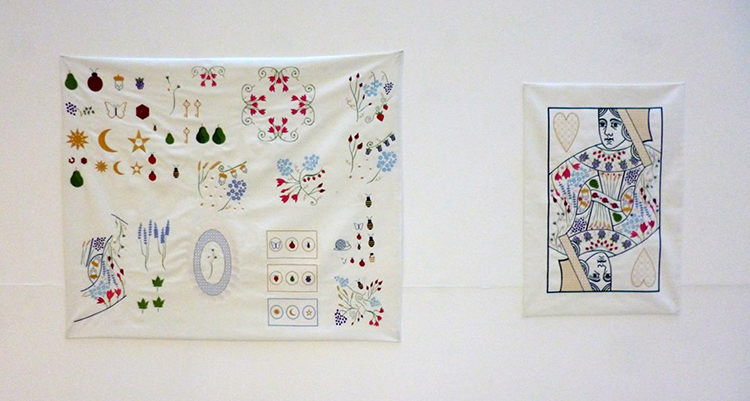
Aisling Smyth holds a First Class Honours degree from the Belfast School of Art, where she recently graduated and is currently their resident Textile Artist.
Aisling has been the recipient of numerous awards, including the Lilla Speir Award for embroidered textile art, as well as two RDS National Craft Awards.
Her talent for hand, machine, and multineedle embroidery are rivalled only by her impressive experience, ranging from studio assistant, embroidery designer, and costume assistant throughout seasons four and five of Game of Thrones.
Her comfort with dissecting briefs, concepts, and imagery gives her confidence to push boundaries in the world of textile art.
We were pleased to speak with Aisling Smyth, as she provided us with a detailed perspective on her passions, inspirations, and goals. She describes herself as ‘inspired by the historical and motivated by the modern.’
Building up layers and textures
TextileArtist.org: What initially captured your imagination about textile art?
Aisling Smyth: I first learned to sew when I was 18 and doing my foundation degree at Southern Regional College, Newry. Throughout my GCSE and A-Level art projects, I had always worked in relief – building up layers of textures on the surface of paper and painting over.
Our first Textiles workshop in foundation involved sewing strips of fabric over each other and then distressing each layer one by one. This was a whole new way of building up textures and colours on a flat surface and I was instantly enthralled.
As the year went on, Textiles grew to be my favourite and I chose to specialise in this area. I decided to applied for degrees within Textiles and started to build up a portfolio for university interviews. I found myself becoming emerged in my work, spending hours hand stitching and becoming addicted to this whole new craft I had been oblivious to before.
Repetitively forming stitches to watch an image appear, I found making work very therapeutic, and I felt more in tune working in this discipline than I had in any other. Thankfully, my portfolio of work reflected my enthusiasm and I was accepted onto the Textile Art course in the Belfast School of Art, which a year later changed format and is now known as Textile Art, Design and Fashion.
A therapeutic craft
What is your chosen medium and what are your techniques?
Throughout my degree, I was taught a wide range of techniques and got to learn the basics of Knit, Screen Printing, Weave and Pattern Cutting. My first love, however, was always Embroidery and today the Embroidery workshop in BSA is my home away from home.
Originally, hand stitch was my weapon of choice and I made super decorative work that was hand beaded and encrusted with embellishment. As my ideas progressed and my knowledge of textiles grew, so too did the scale of my work. I began to use machines, particularly the multineedle. This machine is usually used in an industrial setting to stitch out designs at great speed and basically mass produce embroidery. They operate thorough specialist embroidery software and the trick to using this machine efficiently is mastering the computer program.
Many students find it hard to jell with this type of embroidery as digitising a design properly means spending a lot of time in front of a computer screen; it’s not ‘hands on’ enough. But for me, it is the perfect way of achieving the clean-cut precise aesthetic that my work has become known for.
Recently I have started working into my machine embroidery and hand beading the fabric. My all-time favourite materials to use for this are sew-on Swarovki crystals. They make my work twinkle, add an air of enchantment, and really capture the gaze and imagination of the viewer.
How would you describe your work and where do you think it fits within the sphere of contemporary art?
‘Inspired by the historical and motivated by the modern’
That’s the tagline I have coined for my work.
Traditional needlework samples serve as the main source of my inspiration. The 18th centaury particularly is my favourite.
The technical skill displayed within these samples baffle me. They provide a glimpse into a time that is so detached from today’s fast society. I use these textiles as a template on which to apply my own flourishes. I am a major lover of geometry, semiotics, pattern, and bold, juicy graphics. Embroidering my work using digital advances within the field, I aim to marry the old with the new and represent a new generation of embroiderers.
Ever the perfectionist
Tell us a bit about your process and what environment you like to work in?
As stated before, it all starts by looking to the past – a lovely day in the library looking at old embroidery books, and of course reading articles and browsing through the fabulous archives found on the V&A’s website. I then collect loads of modern imagery and create a visual bank of inspiration. From this research I start to sketch a version of the end goal.
Next comes the most important part of what I do, which is digitising and sampling. This calls for a giant bottle of water to keep me alert and as quiet a space as possible. For instance, I can’t listen to earphones while working. I wish I could, but I find it too distracting. Also, I use music as a method of unwinding so I try not to associate it with working.
Once I have a few designs digitised, sampling begins. It is only by watching the machine embroider that you see the flaws in your digitised file and I will work at one design relentlessly until it stitches correctly. This takes a lot of patience. Naturally, I am quite a patient person, but at times it has been known to desert me. I will have to leave the workshop early to go home for a long walk followed by a bath, and an early night before starting again the next morning.
Only when my machine stitches with the technical excellence found in hand stitched textiles from history will I be happy to move on to the next design. This determination for perfection is probably my best attribute in terms of being a maker, but sometimes as an emerging artist my confidence will stifle as I feel I could be churning out a higher volume of work per week if I were less picky. However, the golden rule of craft is that quality rules over quantity. I try to remember this when feeling in doubt.
Do you use a sketchbook?
Yes. I use my sketchbook as an archive of all my embroideries that went wrong.
Every week, I chop up my samples and sort into two piles: glitchy and finished.
The glitchy ones get stuck into my book and annotated as to why they went wrong.
I love using a hardback sketchbook but often have to reinforce its spine with masking tape to prevent it busting from all the fabric glued into its pages. My sketchbook is also where I store the visual research collected throughout a project. I also stick in snippets of artist statements and articles that have intrigued or inspired me.
The last and probably the most frequently occurring feature in my sketchbook is a list of aims. These could be daily, weekly or monthly. I can’t really settle until I make a list and it has almost become an exercise of habit rather than a practical organisational tool. The lists may not always be ticked off, but their existence keeps me sane, so why not?
Today’s pixelated world
What currently inspires you and which other artists do you admire and why?
Currently, Elizabethan embroidery is my ‘thing’. The wealth of splendour found in embroidery from this era is fascinating. I love the over the top and interweaving patterns of flora and fauna. I have been composing patterns in my sketchbook and digitising lots of sumptuous satin stitch. So far, the work has been machining out quite successfully.
My newest piece of work ‘Don’t Touch What You Can’t Afford’ is a combination of my historical fascination and love for modern, quirky graphics. I have always been interested by the illustrated ‘royal’ playing cards and so have redesigned the Queen of Hearts costume with embroidery fit for her status.
There are quite a list of artists and designers who inspire me. In terms going digital, Rachel Parker is my main influence. I love how she meshes her hand stitches with today’s pixelated world. In terms of referencing historical techniques, Caren Garfen’s work really intrigues me. I saw her work in the flesh at the Knit and Stitch Shows in Dublin and I could stare at it for hours – its aesthetic mixed with its gender-centric concept is really thought provoking.
The last artist I want to talk about is Lauren DiCioccio. I would love to see her work in person. Her highly visual handcrafted pieces of textile art grab my imagination and really get me motivated for making work. When I was stitching my embroidered banknote, one of my friends linked me to her wonderful website. I died and went to embroidery heaven.
Tell us about a piece of work you have fond memories of and why?
It’s hard to pick just one piece, but the work I’m going to tell you about us an A3 purple sampler I stitched back in 2011 during my early days at Belfast School of Art.
I dipped fabric into a range of dyes for a ‘mark making on cloth’ exercise and worked on the result throughout the semester to practise the hand and machine stitches we were learning. It was a labour of love and I stitched it in my studio, in my student flat, in the pub, and at home in my parents house, as well. When I look at it, I remember the excitement of starting university, the joy of meeting all the lovely, like-minded ladies in my course, the parties, and the hangovers.
This early example no longer represents me as a maker, but it shows the starting point of a journey that continues today, and it is quite a sentimental artifact for me.
Breaking away from the traditional
How has your work developed since you began and how do you see it evolving in the future?
The biggest development within my work has been the major breaking away from hand to machine stitch. Also, my continued desire for making large work means I am pushing my ambitions and constantly challenging myself. One thing I want to try in the future is making constructed embroidered textiles rather that just flat works for the wall. Fashion embroidery is something that has always inspired me and I would love to get to grips with basic pattern cutting and have a new application for my embroidered designs.
What advice would you give to an aspiring textile artist?
In terms of being an independent artist, I am still figuring that out for myself. Being a fresh graduate with four years of full-time education under my belt, I do have some advice for art students.
First, don’t let the haters get you down. Unfortunately, people will roll their eyes when you tell them your fantastic choice of seeking an arts education. Don’t let it get to you, and remember that by perusing a career within the creative industries you are enriching the lives of others and will be doing your part in generating £71.4 billion for the UK economy.
Second, don’t take negative feedback to heart. Every now and then you will endure a really negative and demoralising tutorial with a member of staff. You will have your ideas, skills, and work challenged. This is not a personal attack – it is your tutor telling you they see your potential and want you to achieve it.
Finally, the loudest person in the room is not necessarily the strongest. Don’t feel intimidated by students who can ‘talk the talk’. In the courses we study, ‘doing it’ is better than ‘talking about it’ and it is better to pump all your energy into improving your practise – that way your work will speak for itself.
What other resources do you use?
I keep a blog on Tumblr and have found this a great way of keeping inspired and up-to-date with trends within art and design. I have the app on my phone and throughout the day I will scroll through the blogs I follow that broadcast everything from fine art to craft, street style to cute fluffy animals. It’s a great way of connecting with other makers as well.
When I get tired of looking at everything through a screen, I’ll go the library and flick though the journals. ‘Crafts’, ‘Embroidery Magazine’ and ‘Selvedge’ are my first choices, but I’ll also have a look at publications like ‘Print’, ‘Creative Review’, and ‘Dazed and Confused’.
What piece of equipment or tool could you not live without?
I guess the obvious answer for this is the multineedle embroidery machine. I am very lucky that my current residency allows me use this facility for another year. Yet truthfully, the main equipment I absolutely couldn’t live without is a needle and thread. As long as these humble tools exist, so too will my sanity, and I will be able to continue crafting, grafting and making work.
Where can readers see your work this year?
For anyone based in Northern Ireland, my work will be exhibited at the end of year shows at Belfast School of Art. However, I am constantly entering work for mainland UK gallery submissions. Should I be successful in these endeavours, the time and dates of the shows will be listed on the ‘News’ page of my website.
Keep up to date with Aisling Smyth on Tumblr, Facebook & Twitter. Feel free email, send a raven, or a message in a bottle and she’ll be sure to reply post-haste.
How about generating more online buzz for Aisling Smyth by sharing this post on Facebook or Twitter?

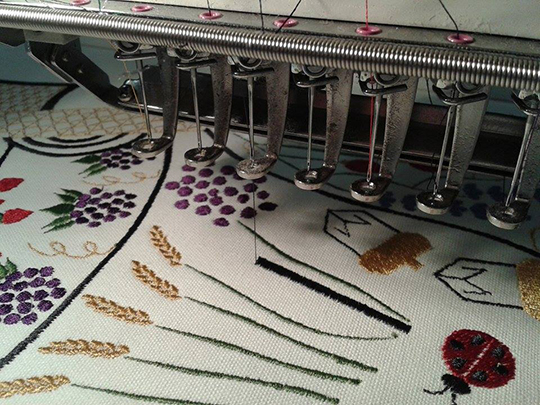
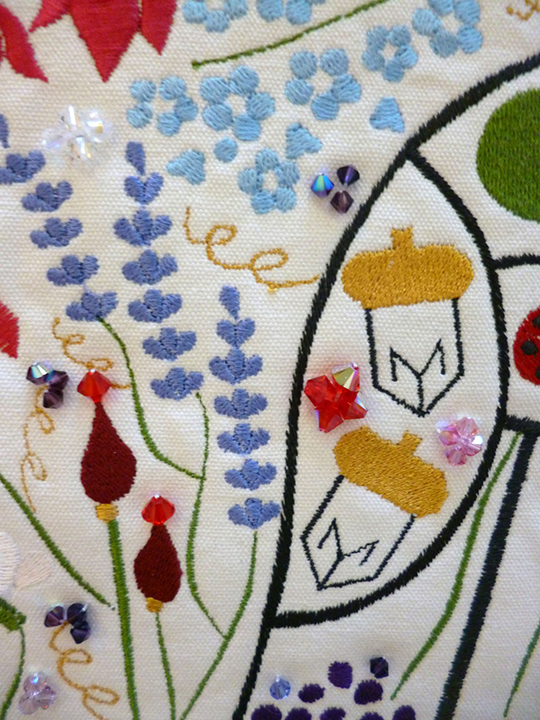
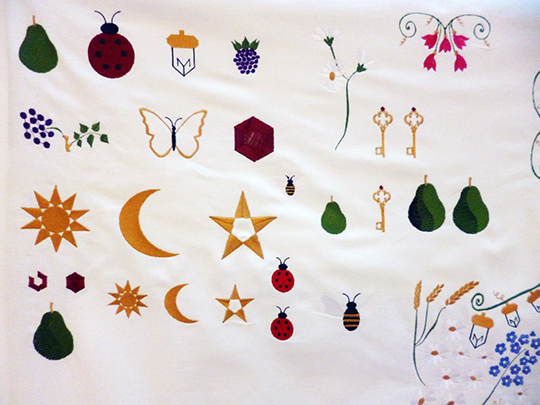
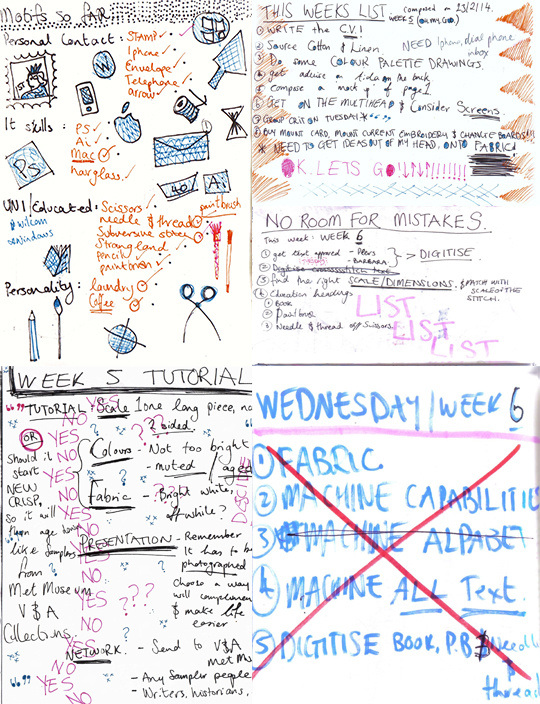
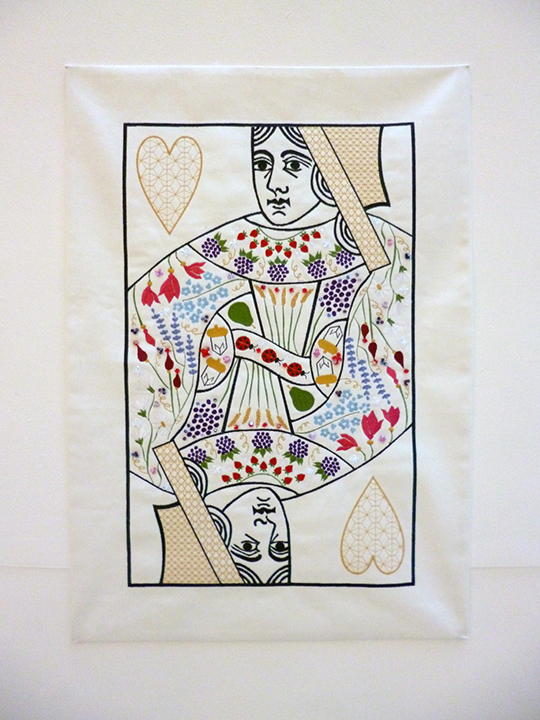
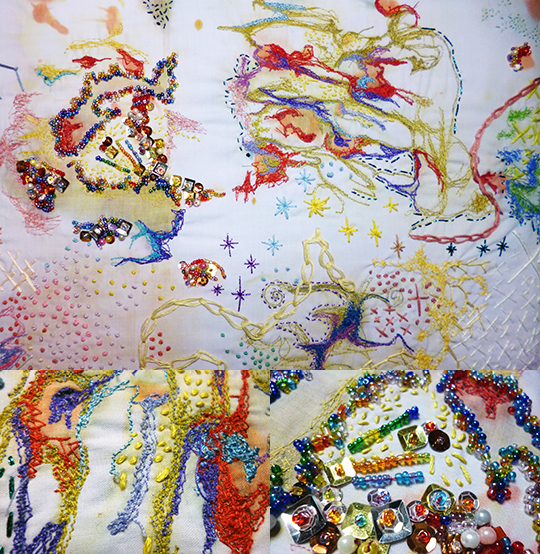
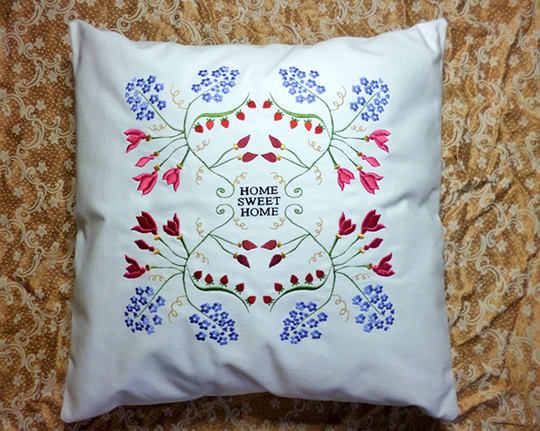

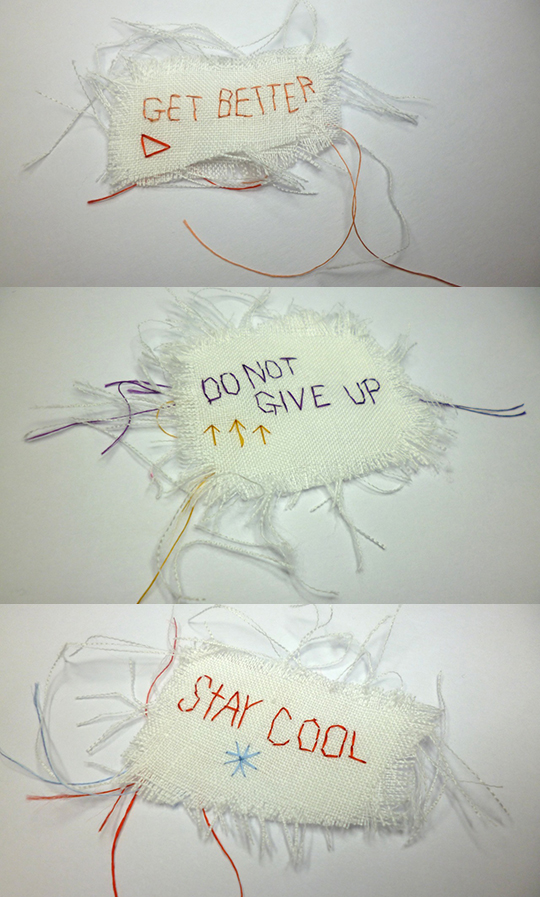















Dear Aisling Smith
my name is Annette Simons. I’m a graphic designer from Hamburg. Right now Im designing a new magazine about knitting, felting, diy. I love your stiched Rose very much and want to ask, if I may buy the photo and present your work. Greetings from Hamburg (sorry, my english is too bad for a conversation) Annette Simons